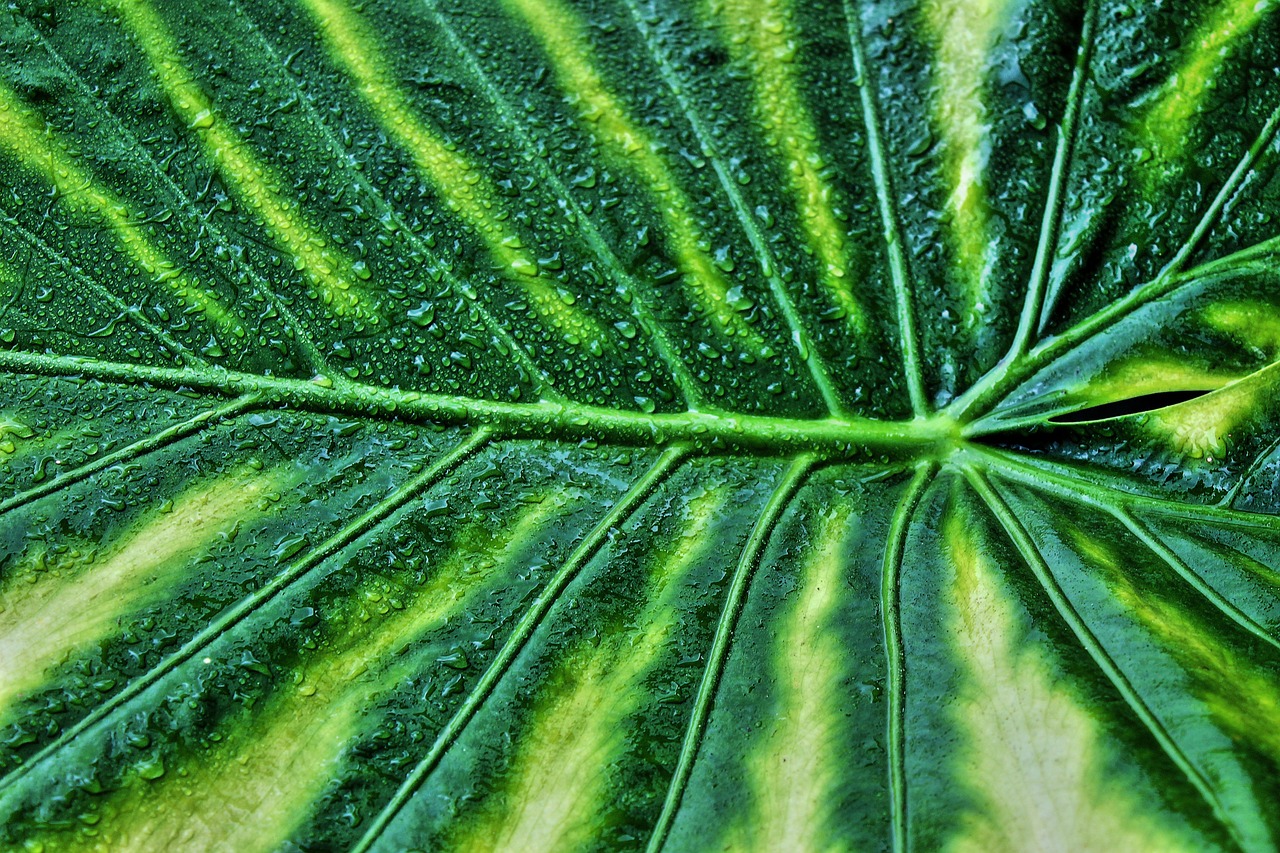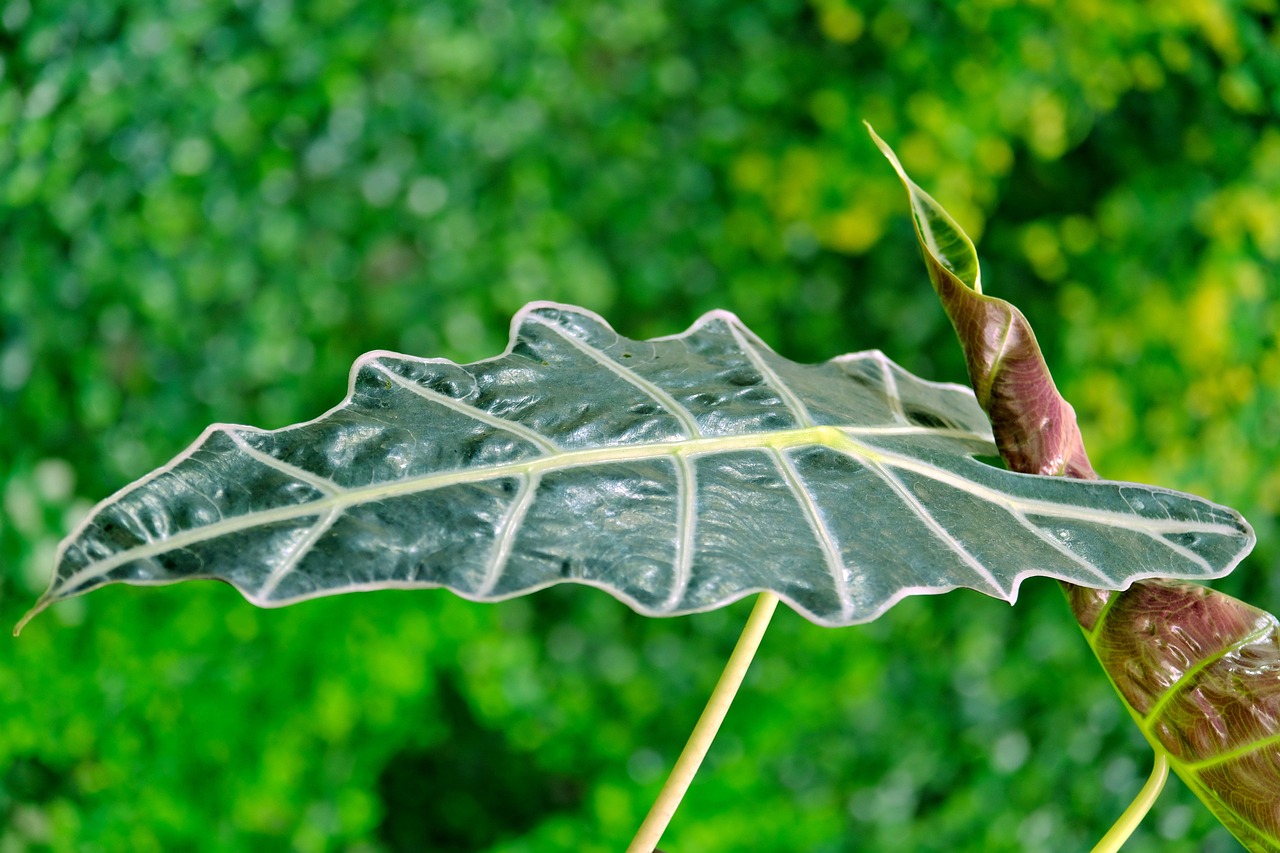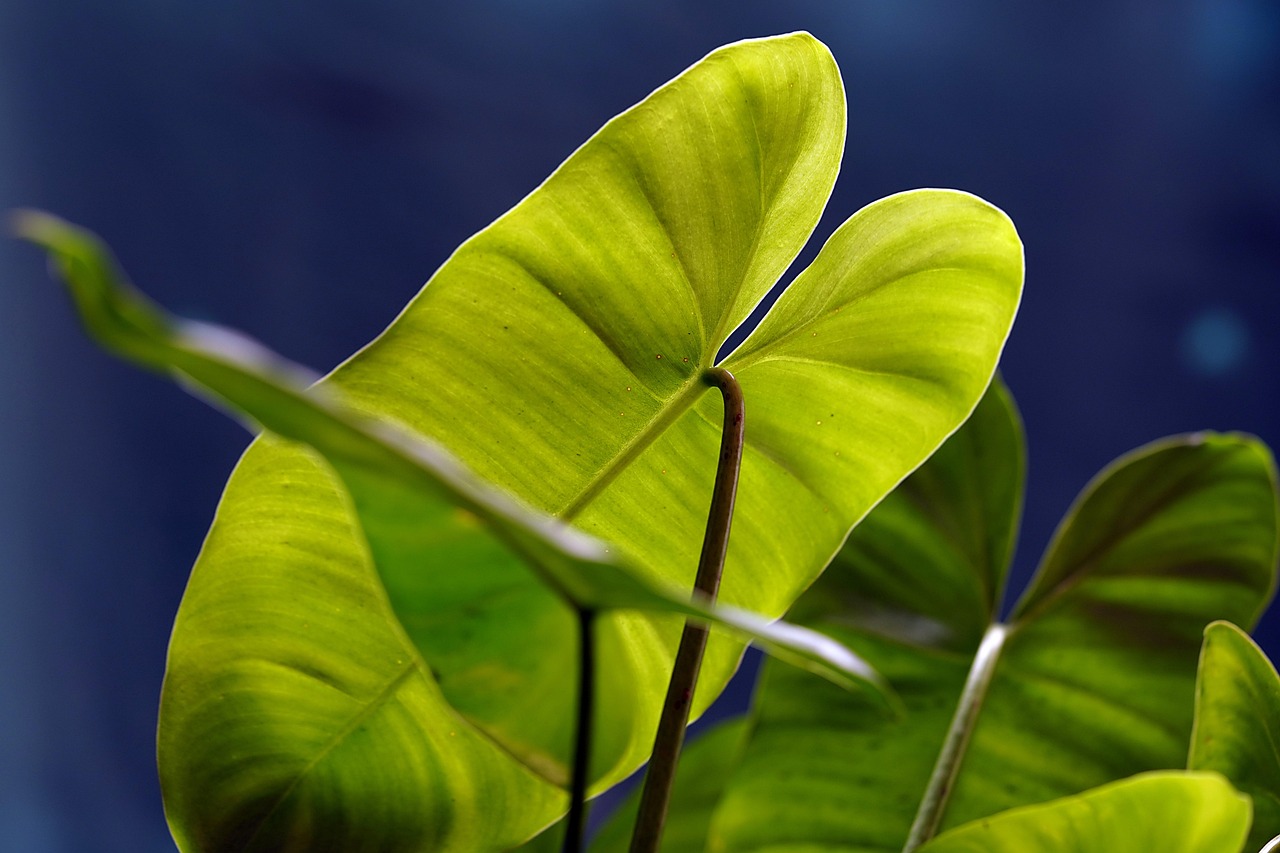Alocasia Amazonica Polly, commonly known as the African Mask Plant, is a stunning houseplant that thrives in bright, indirect light and high humidity. It requires well-draining soil and regular watering to maintain its vibrant leaves and overall health.
Introduction to Alocasia Amazonica Polly

The Alocasia Amazonica Polly is a popular choice among plant enthusiasts due to its striking foliage and unique appearance. This plant features arrow-shaped leaves with prominent veins and a glossy finish that can enhance any indoor space. Native to tropical regions, it thrives in environments that mimic its natural habitat, making it essential to understand its care requirements.
As a beginner, you might feel overwhelmed by the diverse needs of houseplants. However, the Alocasia Amazonica Polly is relatively easy to care for when you know what to do. This guide will provide you with the necessary information to help your plant flourish.
Origin and Characteristics
The Alocasia Amazonica Polly originates from Southeast Asia and is a hybrid of two species: Alocasia sanderiana and Alocasia watsoniana. This hybrid nature gives it unique traits that make it distinct from other Alocasia varieties. Its leaves can reach up to 12 inches long and are characterized by a dark green color with striking white veins.
Besides its aesthetic appeal, this plant can grow up to 2 feet tall when placed in optimal conditions. Understanding its growth patterns is crucial for providing the right care.
Key Features of Alocasia Amazonica Polly
| Feature | Description |
|---|---|
| Common Name | African Mask Plant |
| Botanical Name | Alocasia Amazonica Polly |
| Light Requirements | Bright, indirect light |
| Watering Needs | Regularly, keep soil moist but not soggy |
| Humidity Level | High humidity preferred (50% or higher) |
| Soil Type | Well-draining potting mix |
Caring for Your Alocasia Amazonica Polly
Caring for your Alocasia Amazonica Polly involves several key factors, including lighting, watering, humidity, and soil type. Each of these elements plays a vital role in ensuring the plant remains healthy and vibrant.
Light Requirements
The Alocasia Amazonica Polly prefers bright, indirect light. Direct sunlight can scorch its leaves, causing damage. Ideally, place your plant near a window where it can receive filtered light throughout the day. If natural light is limited, consider using grow lights to provide adequate illumination.
Watering Practices
Watering is a critical aspect of plant care. For the Alocasia Amazonica Polly, it’s essential to keep the soil consistently moist but not overly saturated. Check the top inch of soil; if it feels dry, it’s time to water. During the growing season, typically spring and summer, you may need to water more frequently than in the dormant months of fall and winter.
Humidity Levels
This plant thrives in high humidity environments. Aim for humidity levels of at least 50%. You can increase humidity by misting the leaves regularly, using a pebble tray with water beneath the pot, or placing a humidifier nearby.
Soil Type
A well-draining potting mix is crucial for the health of your Alocasia Amazonica Polly. A mixture designed for aroids or tropical plants often works best. You can create your own by combining standard potting soil with perlite or orchid bark to improve drainage.
Pest and Disease Management
While the Alocasia Amazonica Polly is a resilient plant, it can still be susceptible to pests and diseases. Being proactive in pest management can help maintain your plant’s health and vitality. Here are some common issues to watch for and how to handle them.
Common Pests
Several pests can affect the Alocasia Amazonica Polly. It’s essential to identify them early to prevent significant damage. The most common pests include:
- Spider Mites: These tiny pests thrive in dry conditions and can cause yellowing leaves. Look for fine webbing on the undersides of leaves.
- Mealybugs: These white, cottony pests often cluster in leaf joints. They suck sap from the plant, leading to stunted growth.
- Scale Insects: Scale appears as small brown or black bumps on stems and leaves. They can weaken the plant by feeding on its sap.
- Aphids: These small green or black insects can be found on new growth and can cause leaf curling.
Prevention and Treatment
To keep your Alocasia Amazonica Polly pest-free, consider these preventive measures:
- Regularly inspect your plant for signs of pests.
- Maintain high humidity levels, which can deter many pests.
- Avoid overcrowding plants, which can promote pest infestations.
If you do notice a pest problem, here are some treatment options:
- Insecticidal Soap: This is effective against many soft-bodied insects. Spray it directly on affected areas.
- Neem Oil: A natural pesticide that can help control a variety of pests. Dilute according to package instructions and apply as needed.
- Manual Removal: For minor infestations, you can wipe pests off with a damp cloth or use a cotton swab dipped in alcohol.
Common Diseases
In addition to pests, the Alocasia Amazonica Polly is susceptible to certain diseases. The most common issues include root rot and leaf spot diseases. Here’s how you can recognize and prevent them:
Root Rot
Root rot is often caused by overwatering or poorly draining soil. Signs of root rot include yellowing leaves, wilting, and a foul odor coming from the soil. To prevent root rot, ensure proper drainage by using well-draining soil and pots with drainage holes. If you suspect root rot has occurred, follow these steps:
- Remove the plant from its pot and inspect the roots.
- Trim away any brown or mushy roots with sterilized scissors.
- Repot the plant in fresh, dry soil.
Leaf Spot Diseases
Leaf spot diseases are often caused by fungal or bacterial infections. Symptoms include dark spots on leaves and leaf drop. To prevent these diseases:
- Avoid overhead watering to minimize moisture on leaves.
- Ensure good air circulation around the plant.
- Remove any infected leaves promptly to prevent spreading.
Propagation Techniques
Propagating your Alocasia Amazonica Polly can be a rewarding experience. It allows you to create new plants while also ensuring the health of your existing one. The most common method of propagation for this plant is through division.
Division Method
The division method involves separating the plant into smaller sections. Follow these steps for successful propagation:
- Select the Right Time: Late spring or early summer is the best time to propagate when the plant is actively growing.
- Remove from Pot: Carefully take the plant out of its pot, being gentle with the roots.
- Divide the Roots: Use clean, sterilized scissors to separate the rhizomes into sections, ensuring each section has roots and a leaf or two.
- Repot: Plant each section into its own pot with fresh potting mix and water lightly.
This method not only creates new plants but also helps rejuvenate the parent plant by reducing overcrowding in the pot.
Seasonal Care Considerations
The needs of your Alocasia Amazonica Polly may change with the seasons. Understanding these seasonal variations will help you provide optimal care year-round.
Spring and Summer
During the growing season, your plant will thrive with increased light and humidity. Here are some tips for optimal care:
- Increase watering frequency as the plant uses more moisture for growth.
- Fertilize every 4-6 weeks with a balanced liquid fertilizer diluted to half strength.
- Monitor for pests more closely, as they can proliferate in warmer weather.
Fall and Winter
The fall and winter months bring dormancy for many houseplants, including the Alocasia Amazonica Polly. Adjustments during this time include:
- Reduce watering frequency as growth slows down; ensure the topsoil dries out between waterings.
- Avoid fertilizing during this period as the plant does not require extra nutrients.
- Keep temperatures consistent and away from drafts or cold windows.
Common Problems and Solutions

Even with the best care, your Alocasia Amazonica Polly may encounter some challenges. Understanding common problems and their solutions will help you keep your plant healthy and thriving.
Yellowing Leaves
Yellowing leaves are a frequent concern for many plant owners. This issue can stem from various causes, including overwatering, underwatering, or insufficient light. Here’s how to address yellowing leaves:
- Overwatering: If the leaves are turning yellow and feel mushy, you may be overwatering. Allow the soil to dry out before watering again.
- Underwatering: If the leaves are dry and crispy, check the soil moisture. Ensure you are watering regularly.
- Light Levels: Ensure your plant is receiving adequate light. If it’s too dark, consider moving it to a brighter location.
Wilting Leaves
Wilting leaves can indicate that your Alocasia Amazonica Polly is unhappy. The most common reasons for wilting include inadequate watering or root rot.
- Check Soil Moisture: If the soil feels dry, give your plant a thorough watering. If it feels soggy, inspect for root rot and follow the treatment steps mentioned earlier.
- Temperature Stress: Ensure your plant is in a stable environment. Extreme temperature changes can also cause wilting.
Brown Tips on Leaves
Browning leaf tips can be a sign of low humidity or underwatering. To remedy this issue:
- Increase Humidity: Use a humidifier or mist the leaves regularly to maintain high humidity levels.
- Watering Schedule: Ensure you are providing adequate water consistently. Adjust your watering schedule as needed.
Choosing the Right Pot
The choice of pot plays an essential role in the health of your Alocasia Amazonica Polly. Here are some key factors to consider when selecting a pot:
Size
Select a pot that provides enough room for growth but is not too large. A pot that is too big can lead to overwatering since the soil may retain moisture for longer periods. A pot that is too small can restrict root growth.
Material
The material of the pot can also impact drainage and moisture retention:
- Terracotta Pots: These are breathable and allow moisture to evaporate, making them a good choice for plants that prefer well-draining conditions.
- Plastic Pots: Lightweight and often come with drainage holes, but they may retain moisture longer than terracotta.
- Ceramic Pots: Attractive and sturdy, but ensure they have drainage holes to prevent root rot.
Drainage Holes
Regardless of the material, ensure that your pot has adequate drainage holes at the bottom. This allows excess water to escape and prevents moisture buildup, which can lead to root rot.
Fertilization Guidelines
A proper fertilization schedule is vital for ensuring your Alocasia Amazonica Polly receives essential nutrients. Here’s how to effectively fertilize your plant:
Types of Fertilizer
Selecting the right type of fertilizer can make a significant difference in your plant’s growth:
- Balanced Liquid Fertilizer: A balanced formula with equal parts nitrogen, phosphorus, and potassium works well for general feeding.
- Slow-Release Fertilizer: These fertilizers release nutrients gradually over time and can reduce the frequency of applications.
Application Frequency
During the growing season (spring and summer), fertilize your plant every 4-6 weeks. Reduce or eliminate fertilization during fall and winter when the plant is dormant.
Dilution
If using liquid fertilizer, always dilute it to half strength before applying to avoid burning the roots. Follow package instructions for specific ratios if using slow-release options.
Environmental Factors
The environment in which you keep your Alocasia Amazonica Polly affects its overall health. Consider these environmental factors to optimize care:
Temperature
This plant prefers temperatures between 65°F and 80°F (18°C to 27°C). Avoid exposing it to temperatures below 60°F (15°C), as cold drafts can harm it.
Light Exposure
Aim for bright, indirect light. A location near a window with filtered sunlight is ideal. If natural light is limited, consider using grow lights to supplement illumination.
Air Circulation
Good air circulation helps prevent mold and pests. Keep your plant in a well-ventilated area but avoid placing it directly in front of air conditioning vents or heating sources that can dry it out.
Common Myths About Alocasia Amazonica Polly
As with

many popular houseplants, several myths and misconceptions surround the Alocasia Amazonica Polly. Understanding facts versus myths can help you provide better care. Here are some common myths:
Myth 1: Alocasia Plants Are Poisonous
While it’s true that parts of Alocasia plants can be toxic if ingested, they are not harmful when handled with care. Always wash your hands after handling the plant, especially if you have pets or small children.
Myth 2: These Plants Require Constant Moisture
Many believe that Alocasia plants need to be kept in constantly wet soil. In reality, while they do prefer moisture, they can suffer from root rot if the soil remains soggy. It’s essential to allow the top inch of soil to dry out between waterings.
Myth 3: Alocasia Amazonica Polly Cannot Adapt to Different Conditions
Some might think that these plants are finicky and cannot adapt. On the contrary, the Alocasia Amazonica Polly is quite adaptable when it comes to light and humidity, as long as you provide adequate conditions. They can thrive in varying light conditions but flourish in bright, indirect light.
Seasonal Adjustments for Optimal Growth
As season

s change, so do the needs of your Alocasia Amazonica Polly. Being aware of these adjustments can help you maintain a healthy plant throughout the year.
Spring Considerations
Spring is a time of rejuvenation for plants. As temperatures rise, your Alocasia will start growing actively. Here’s how to prepare:
- Increase Watering: As growth picks up, ensure you are watering adequately.
- Repot if Necessary: If your plant has outgrown its pot, consider repotting to give it more space for growth.
- Start Fertilizing: Reintroduce fertilizer to support new growth.
Summer Considerations
The summer months can bring heat and increased sunlight. Here are some care tips:
- Monitor Humidity: During hot days, humidity levels can drop. Use a humidifier or mist your plant regularly.
- Check for Pests: Increased warmth can lead to pest infestations; keep a close eye on your plant.
Fall Considerations
As temperatures begin to cool in the fall, your plant’s growth may slow down. Adjust your care routine accordingly:
- Reduce Watering: Allow the soil to dry out more between waterings.
- No Fertilizer Needed: Stop fertilizing as your plant enters dormancy.
Winter Considerations
The winter months often require special attention to keep your Alocasia healthy:
- Avoid Cold Drafts: Keep your plant away from cold windows or doors to prevent shock.
- Maintain Consistent Temperature: Aim for stable indoor temperatures, ideally between 65°F and 75°F (18°C to 24°C).
- Minimal Watering: Only water when absolutely necessary, allowing for longer drying periods.
Final Thoughts
Caring for an Alocasia Amazonica Polly can be a rewarding experience. With its striking foliage and unique growth patterns, this plant adds character to any indoor space. By understanding its specific needs regarding light, water, humidity, and temperature, you can create an environment where it thrives.
Remember that patience is key when caring for plants. Each Alocasia Amazonica Polly is unique and may require slight adjustments in care based on its specific environment and conditions. Regular monitoring will help you catch any issues early, ensuring a long and healthy life for your plant.
With the right knowledge and care strategies outlined in this guide, you are well-prepared to embark on your journey as an Alocasia enthusiast. Enjoy nurturing your plant and watching it flourish over time!
